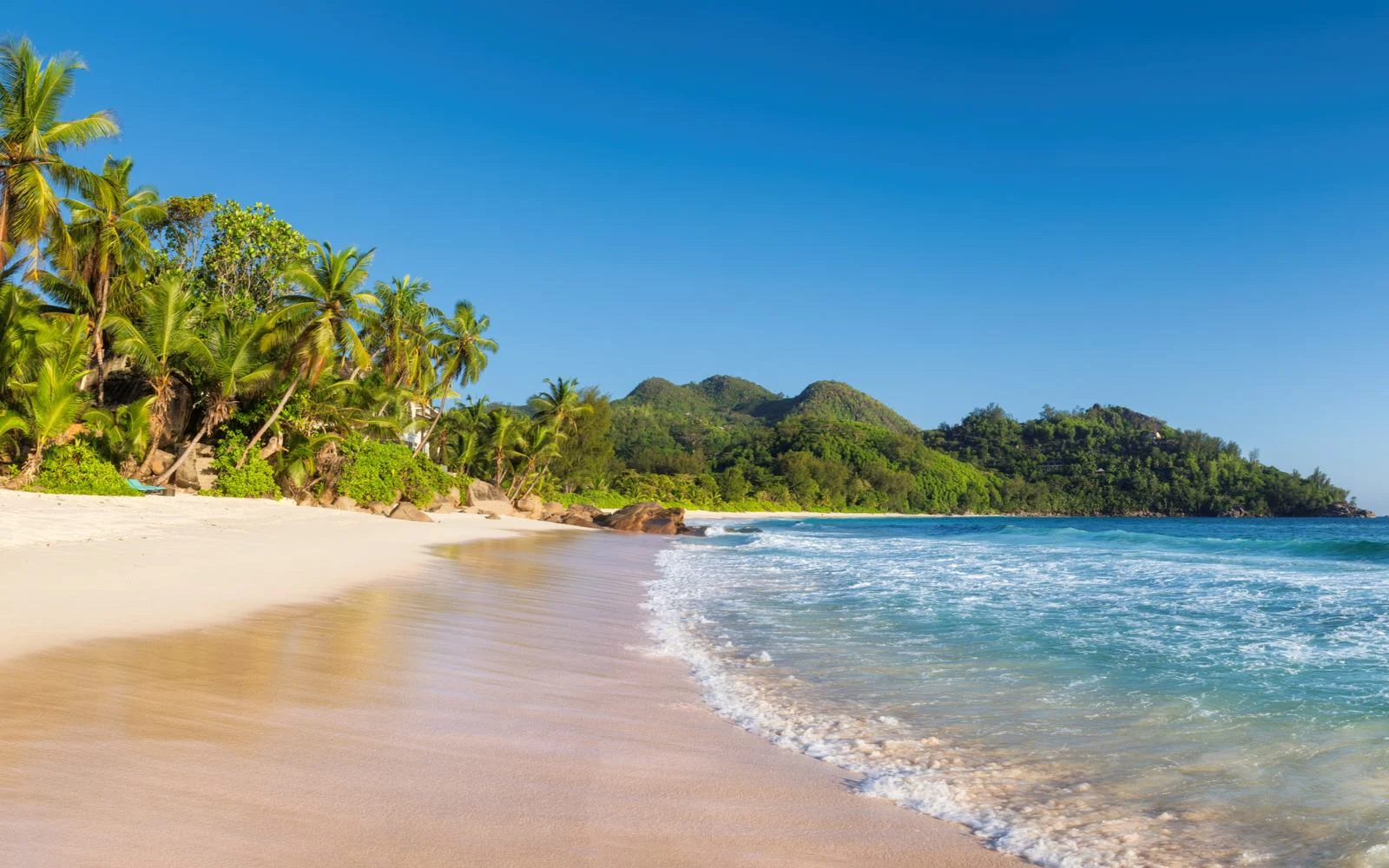What's the best time to visit Jamaica?
The best time to visit Jamaica is during the dry season, from December to April. During this period, the weather is warm but not too hot, with average temperatures ranging from 68-86°F (20-30°C) and low humidity. This is perfect for enjoying the beaches, festivals like Rebel Salute and Bob Marley Week, and outdoor activities. However, be prepared for higher prices and crowds as it’s peak tourist season.
Jamaica, one of the most vibrant islands in the Caribbean, is a popular vacation destination for a reason and many beach-hopping visitors come each year.
The beaches and resorts of Jamaica are the main draw, with popular areas including Montego Bay full of amenities for even the most pampered guests. Visitors who head out of their resorts will be rewarded with spectacular nature, from remote Reach Falls to pristine sandy shores such as Winnifred Beach.
The local culture is one of the island’s main attractions, from the thumping parties to the lip-tingling jerk barbecue. But when’s the best time to visit Jamaica? We’ll show you this and more below.
The Overall Best Time to Visit Jamaica
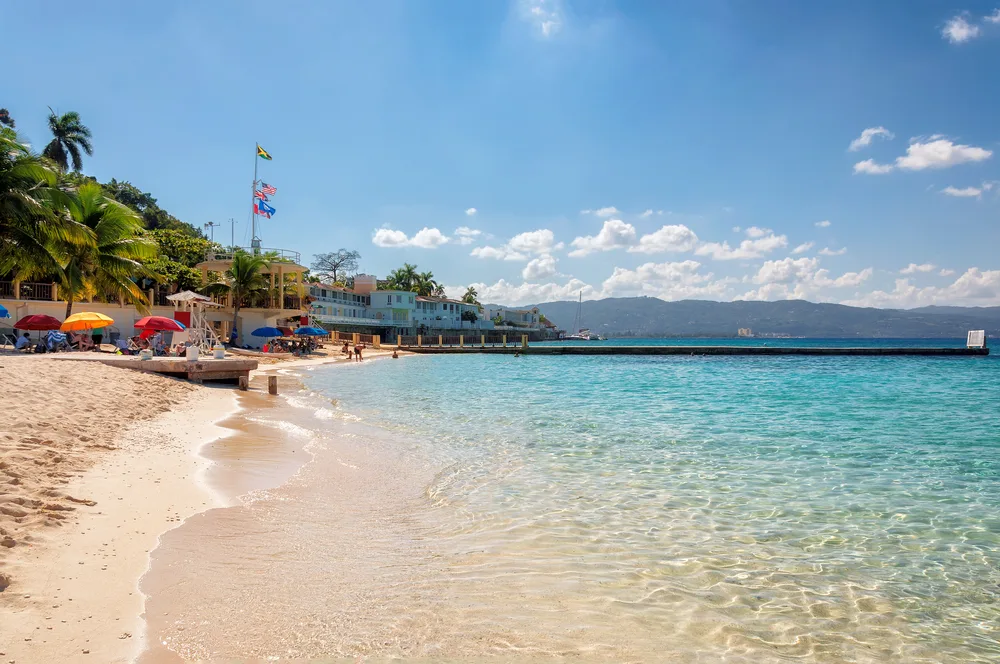
Lucky-photographer/Shutterstock
The best time to visit Jamaica for the perfect beach vacation is during the winter, from December to April, when the weather is warm but not too hot and sunny.
When going on a vacation to a destination known primarily for its beaches, you obviously want to get there when the weather is best. Otherwise, you’ll be spending your beach vacation locked in your hotel room, looking at the rain getting in the way of your tan.
Tropical Jamaica has warm temperatures all year round, with no real winter. The dry season from December to April is the coolest time of year, but really that means you’ll get average daily high temperatures in the low-mid 80s instead of the 90s.
It is still more than warm enough for swimming and diving, but you’re at a lower risk of sweating the day away. The real draw of visiting between December and April is the sunshine.
During the dry season, most months receive only a few days of rain according to the UK Met Office, with an average of nine daily sunshine hours.
The humidity levels are also much lower during the dry season. This is the perfect weather for swimming or going on excursions to the jungle interior. For party fiends, the dry season is definitely the best time to visit.
The end of March and early April are ideal times to visit if you are a college student as this is when spring breakers descend upon Jamaica (although this might be the time to skip the island if you are in search of a more mature, calm visit).
Many of the island’s best clubs, especially beach clubs, operate seasonally, so expect the most choices on where to go out during the peak season.
The peak season also sees some of the best island festivals, such as:
- Rebel Salute music festival (January)
- Bob Marley Week, a week-long celebration of the reggae great around his birthday (February 6th)
- Carnival, one of the largest street parties in the world (April)
Before planning your trip, one thing to keep in mind is that this is the most popular time to visit Jamaica. Expect crowds and high prices at popular resorts, which may put you off from enjoying your vacation and can make the authentic Jamaica feel unreachable.
Least Expensive Time to Visit Jamaica
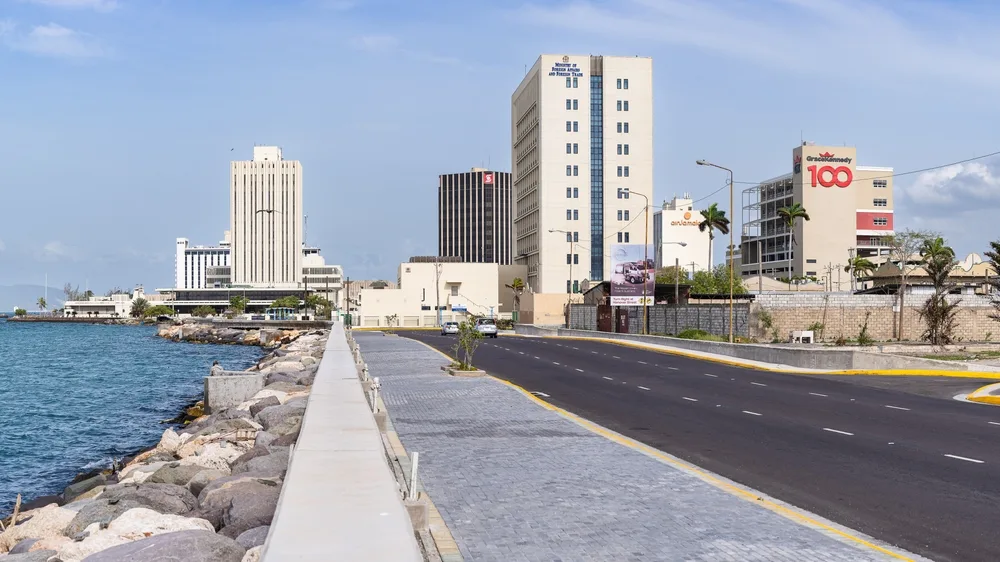
Kingston, Jamaica – May 23, 2022: Horizontal panorama of the Downtown Kingston skyline. High rise office buildings/Orenthomasphotography/Shutterstock
The least expensive time to visit Jamaica is any time during the rainy season, between May and mid-November, when the island gets fewer visitors. The best time to visit is at the beginning or very end of the rainy season.
The middle months of July and August tend to have high prices due to school breaks, and not very good weather. In May and early June, you can find discounted hotels up to 30% off their usual price, and still avoid some of the worst of the rainy weather.
The late rainy season months, October to mid-November, also have good deals. The least expensive month to fly to Jamaica is usually April or May, at the very beginning of the rainy season.
The spring break and festival crowds are going home, and airlines offer discounts. To save more money on your flights, make sure to fly on a weekday, not a weekend, as that is when fewer people fly.
If you were hoping to go on a cruise to Jamaica, the most affordable time to do so is between July and October. Most people avoid going on cruises during hurricane season, but if you are willing to take a risk, you can save significant amounts of money.
Least Busy Time to Visit Jamaica
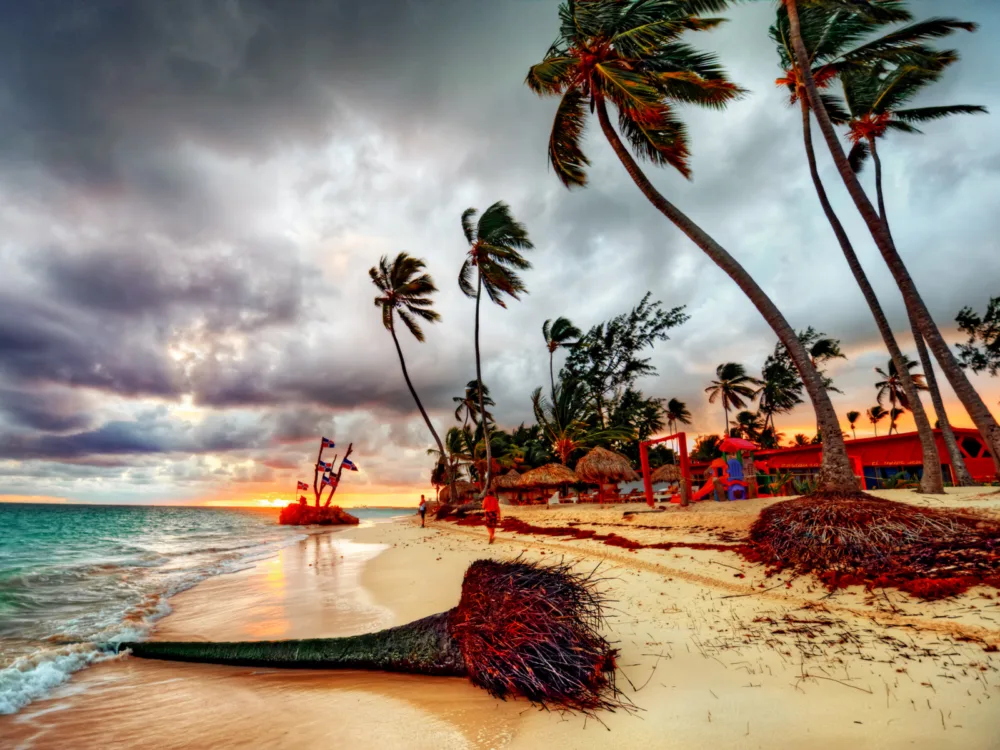
West coast Scapes/Shutterstock
The least busy times to visit Jamaica are during the shoulder-season months of late April to June and September to October. Most crowds in Jamaica come from cruise ships, so a good way to figure out when to visit to avoid the crowds is to look at the cruise ship schedule.
According to this link from the Montego Bay port, the fewest cruise ships arrive between April and September. Most visitors avoid visiting Jamaica during the rainy season since that is hardly ideal weather to sit on the beach.
However, with the right preparation, you can still enjoy adventures during this time. Most rainy season days have one short but intense shower in the afternoon, but no rain the rest of the day. With the right preparation, you can still spend plenty of time outdoors.
The rainy low season means that you’ll have less people on activities with you, and that popular tours won’t fill up as quickly. This is the ideal time of year to explore Jamaica’s lush interior.
The rain means that water levels are high, so waterfalls look much more beautiful than during the dry winter. Plus, it’s a great time of year to go rafting. If your main goal is to avoid the crowds, make sure that you avoid July and August.
Even though these months are smack in the middle of the rainy season, they are also the months when schools in countries most tourists to Jamaica are from, the United States and Canada, are closed. Families tend to fill up popular resorts in Jamaica, despite the worse weather.
Worst Time to Visit Jamaica
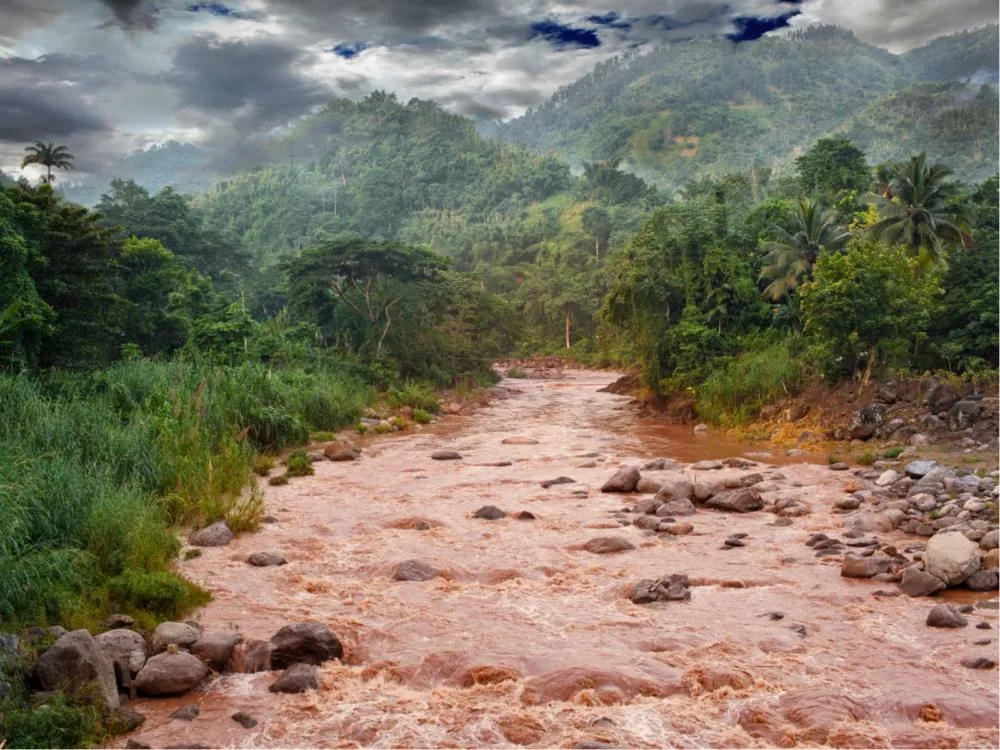
KKulikov/Shutterstock
The worst time to visit Jamaica is during the peak of the rainy season, between August and mid-October, when the weather is at its worst.
Although most months in the rainy season are manageable, with just sporadic daily showers and high humidity, August, September, and October see frequent rain showers, making it difficult to get around.
This season is also the peak of the Atlantic hurricane season. While the hurricane season formally lasts from June until November, most storms form between mid-August and early October. Jamaica is frequently affected by hurricanes and tropical storms.
In 1988, Hurricane Gilbert killed dozens of people and destroyed nearly 50% of Jamaica’s agricultural sector. While most hurricanes are not as devastating as the infamous Gilbert, a strong tropical storm still brings lashings of rain, storm surges, flooding, and landslides.
You may get stuck in Jamaica or forced to evacuate. Expect outages of important infrastructure, such as electricity. Visiting during the peak rainy season is not just unpleasant but can be downright dangerous.
If you decide to travel during this time to take advantage of the deals, make sure that you have travel insurance that gives you flexibility to cancel. Check the weather regularly to see if there is a hurricane warning.
Jamaica by Month: Climate & Activities
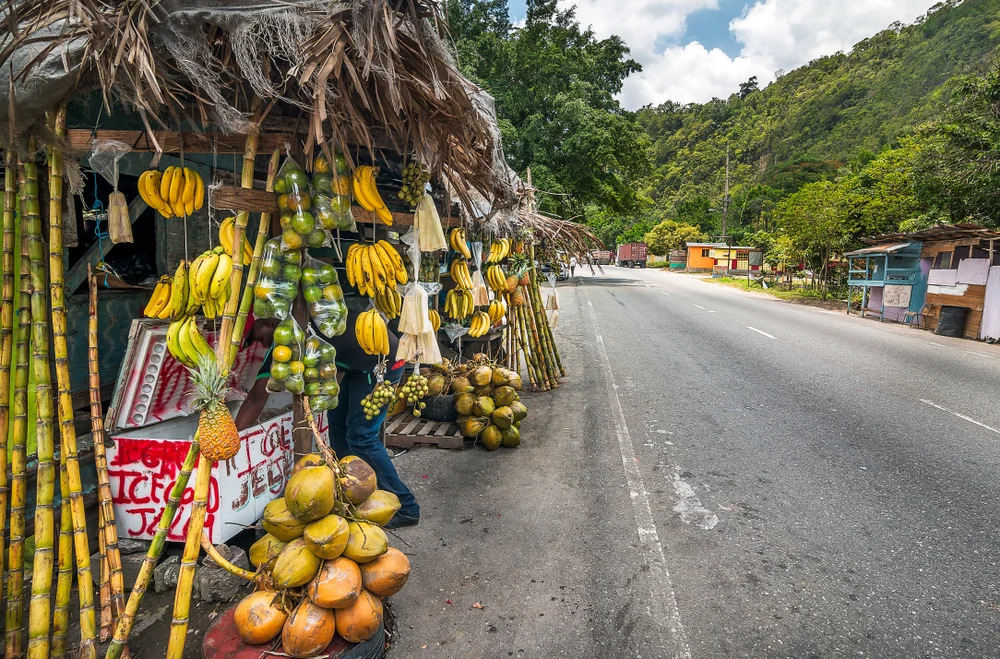
LBSimms Photography/Shutterstock
Still unsure about the best time to visit Jamaica? Take a look at our summary of the weather and climate by month below:
January
In January, winter temperatures in Jamaica range from 20 to 30°C (68-86°F). It’s an ideal time for exploring the waterfalls and lush landscapes of Ocho Rios, attending the Rebel Salute reggae festival, and enjoying the beaches in Montego Bay.
February
Similar to January, February maintains mild temperatures between 20 to 30°C (68-86°F). Visitors can experience the vibrant nightlife in Negril, go snorkeling in the crystal-clear waters, and enjoy the laid-back atmosphere of Treasure Beach.
March
As spring begins, temperatures range from 21 to 31°C (70-88°F). March is perfect for hiking in the Blue Mountains, attending the Jamaica Carnival, and enjoying the cultural scene in Kingston.
April
Spring temperatures in Jamaica range from 21 to 31°C (70-88°F). It’s an ideal time for exploring Dunn’s River Falls in Ocho Rios, attending the Jamaica International Invitational track and field meet, and relaxing on the Seven Mile Beach in Negril.
May
In May, Jamaica sees temperatures ranging from 22 to 31°C (72-88°F). It’s a great month for visiting the historic Rose Hall Great House, attending the Trelawny Yam Festival, and exploring the Martha Brae River on a bamboo raft.
June
Summer arrives with temperatures between 23 to 32°C (73-90°F). June offers opportunities for enjoying the vibrant coral reefs while snorkeling or diving, experiencing the lively atmosphere of Kingston’s street parties, and hiking in the Cockpit Country.
July
July maintains hot temperatures from 23 to 32°C (73-90°F). It’s a popular month for attending the Reggae Sumfest in Montego Bay, exploring the scenic landscapes of Port Antonio, and enjoying water sports on the North Coast.
August
Jamaica’s temperatures in August range from 23 to 32°C (73-90°F). Despite the heat, it’s an excellent time for exploring the historical sites of Spanish Town, attending the Jamaica International Film Festival, and enjoying the beaches in Ocho Rios.
September
As fall begins, temperatures range from 23 to 32°C (73-90°F). September offers a pleasant transition, with opportunities for hiking the Blue Mountains, attending the Jamaican Jerk Festival, and enjoying the natural beauty of Reach Falls.
October
October in Jamaica sees temperatures ranging from 23 to 31°C (73-88°F). It’s a great month for attending the National Heroes Day celebrations, exploring the Bob Marley Museum in Kingston, and enjoying the off-peak tranquility of the beaches.
November
Fall temperatures range from 23 to 31°C (73-88°F). November is perfect for exploring the Green Grotto Caves in Runaway Bay, attending the Jamaica Coffee Festival, and enjoying the cultural events in Kingston.
December
In December, winter returns to Jamaica with temperatures ranging from 22 to 31°C (72-88°F). December brings opportunities for festive holiday celebrations, experiencing the vibrant atmosphere of the Junkanoo Parade, and enjoying the resorts in Montego Bay.
Frequently Asked Questions
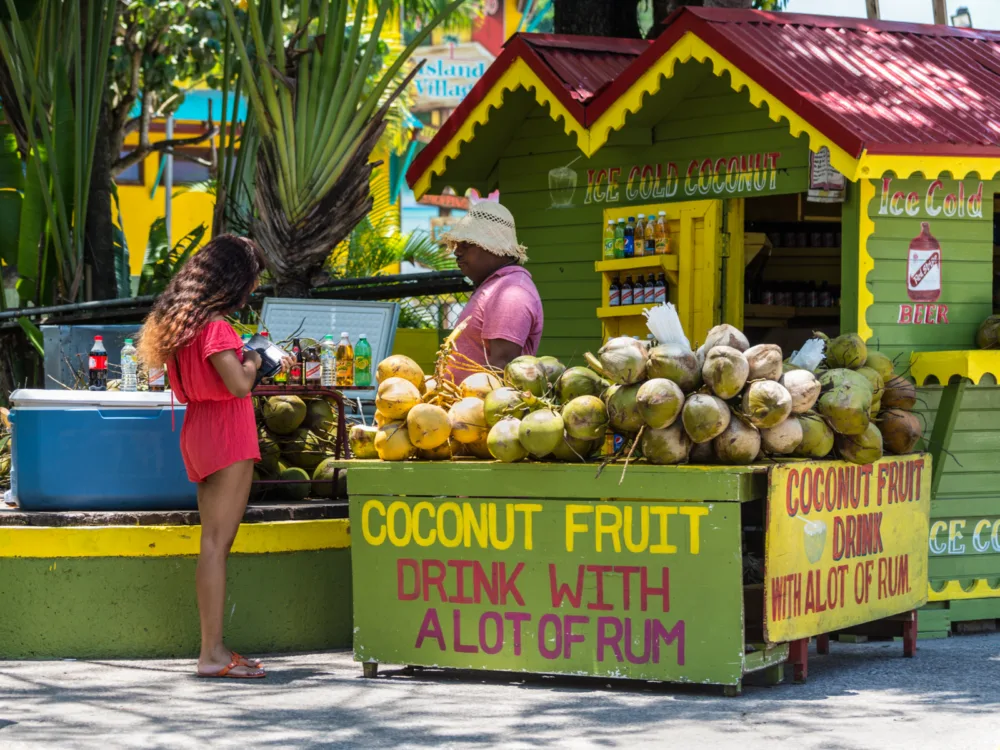
byvalet/Shutterstock
These additional questions can help you pick the best time to visit Jamaica:
What is the best month to visit Jamaica?
The best month to visit Jamaica is January, when the weather is beautiful but there is a lull in the high season crowds.
When is Jamaica’s rainy season?
Jamaica’s rainy season is from May to November, and you can expect daily showers and high humidity during this time.
What is the hottest month in Jamaica?
The hottest month in Jamaica is July, with average daily temperatures reaching the low 90s. The high humidity makes it feel even hotter.
When is the hurricane season for Jamaica?
The hurricane season in Jamaica lasts from May to November, but peaks in August, September, and October, when there are the most storms.
When is the least expensive time to visit Jamaica?
The rainy season, from May to November, is a more affordable time to visit Jamaica. You can find the best deals in spring, May-June.
So, What’s the Best Time to Visit Jamaica?
True beach bums and lovers of nightlife will want to visit Jamaica between December and April, the country’s dry season. To save some money while avoiding the worst of the rainy season weather, visit in May and June.



